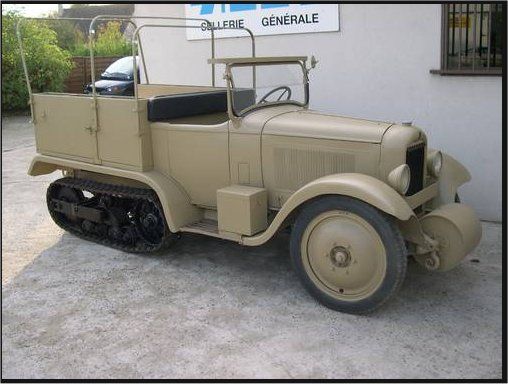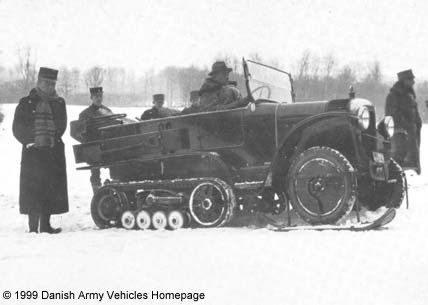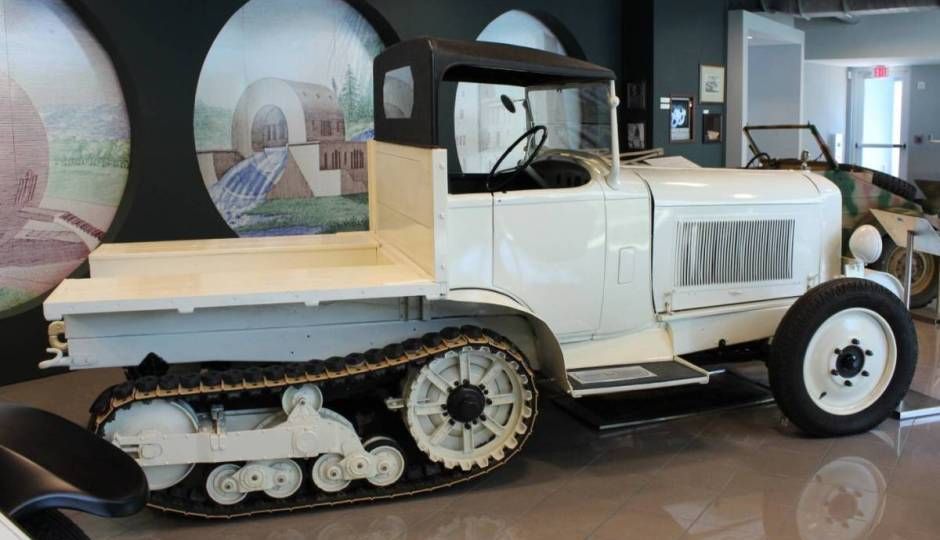The Kegresse-drive, which was mounted with a endless rubber band was invented in 1910 - 11 by Adolph Kégresse, a Frenchman who had worked as technical manager for the Russian Czar Nicholas II from 1906 to 1917. Mr. Kegresse converted the Packard and Rolls-Royce cars of Czar Nicolas, as well as some Austin-Putilov armoured cars.
A lot of Packard trucks were converted with the Kegresse-drive in 1915, and used as ambulances.
After the revolution he returned to France via Finland and, in conjunction with Mr. Jacques Hinstin, produced a boogie which was adopted by André Citroën in 1920.
In 1922, five Citroën-Kegresse K1 vehicles successfully completed the Trans-Sahara Expedition crossing the desert to Timbuktu. Two years later, Georges-Marie Haardt and Louis Audion-Dubreuill used Citroën-Kegresse vehicles to traverse Africa in an eight-month journey that proved the concept.
The Citroën Kegresse was manufactured at Courbevoie and later at Citroëns Lavalllois factory in the northern suburbs of Paris.
Kegresse-equipped vehicles were used by the French Army for a wide variety of roles up to the outbreak of WW II.
Other known users were Belgium, Chile, Germany, Great Britain, Italy, Japan, the Netherlands, Poland, Spain and the United States.
Some of the above mentioned countries only tested the Kegresse-drive, some acquired a licence to produce it, and some bought complete vehicles to their armed forces.



Maybe someone can cut the kettenkrad halftrack, and put them in the place of the Gaz rear wheels?

 Author
Topic: Kegresse. Halftrack cars. (Read 3229 times)
Author
Topic: Kegresse. Halftrack cars. (Read 3229 times)


